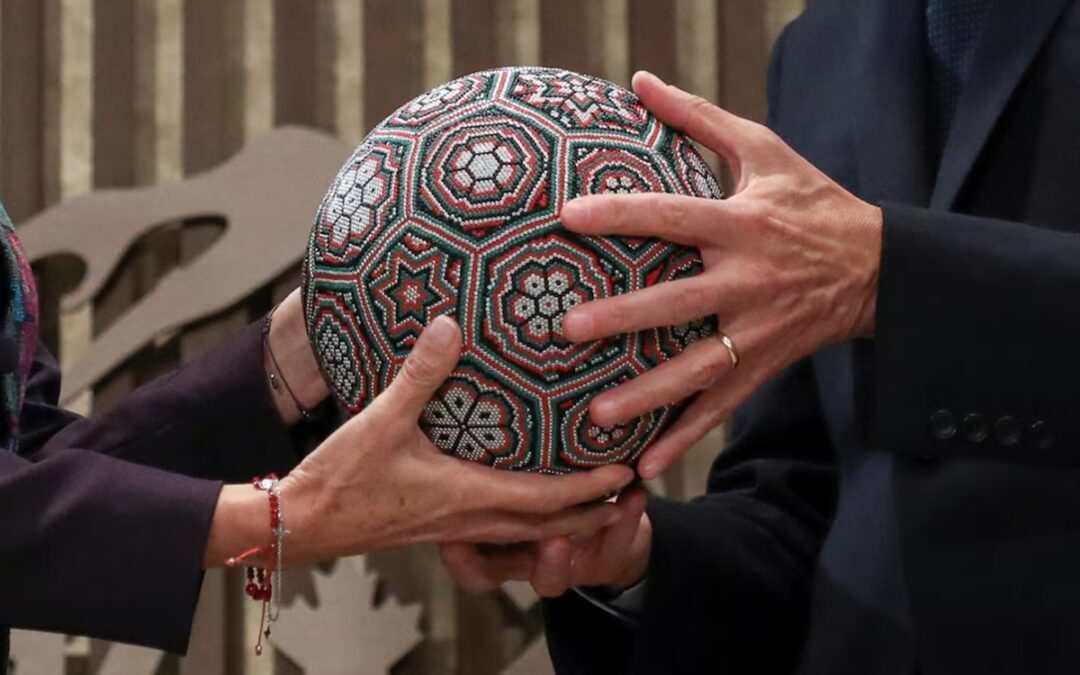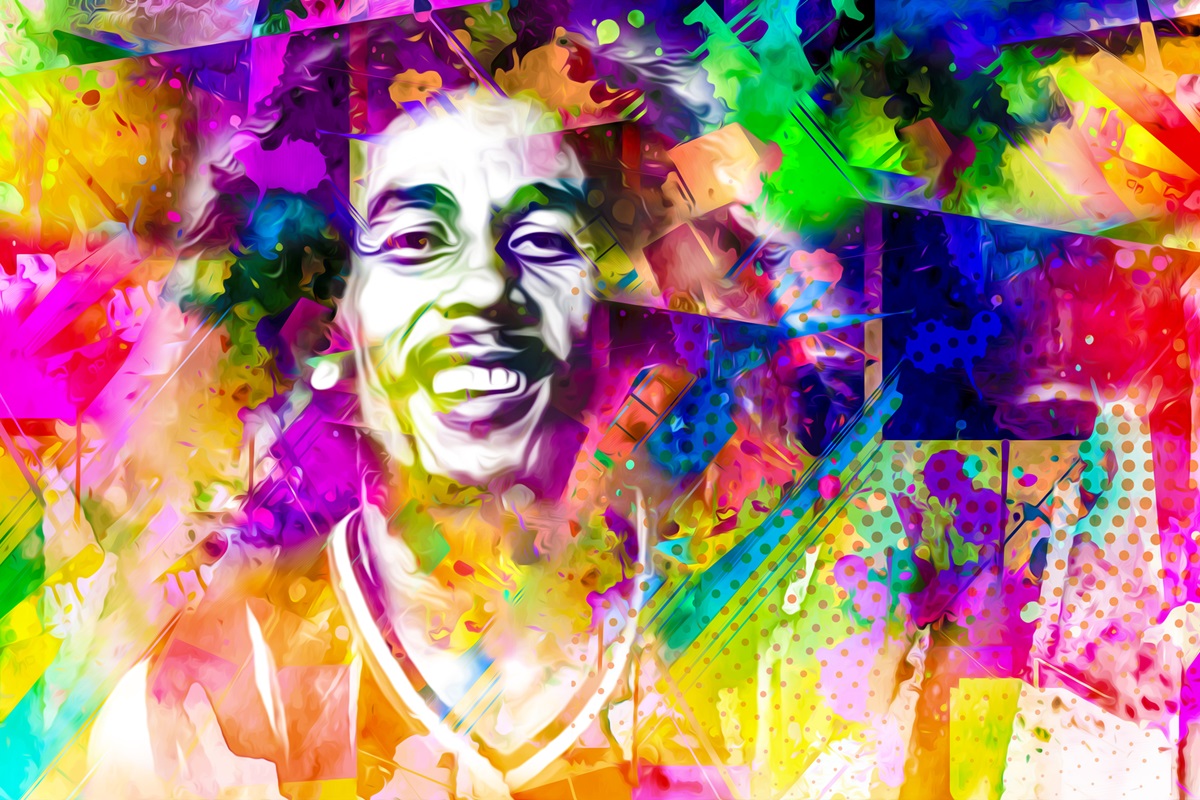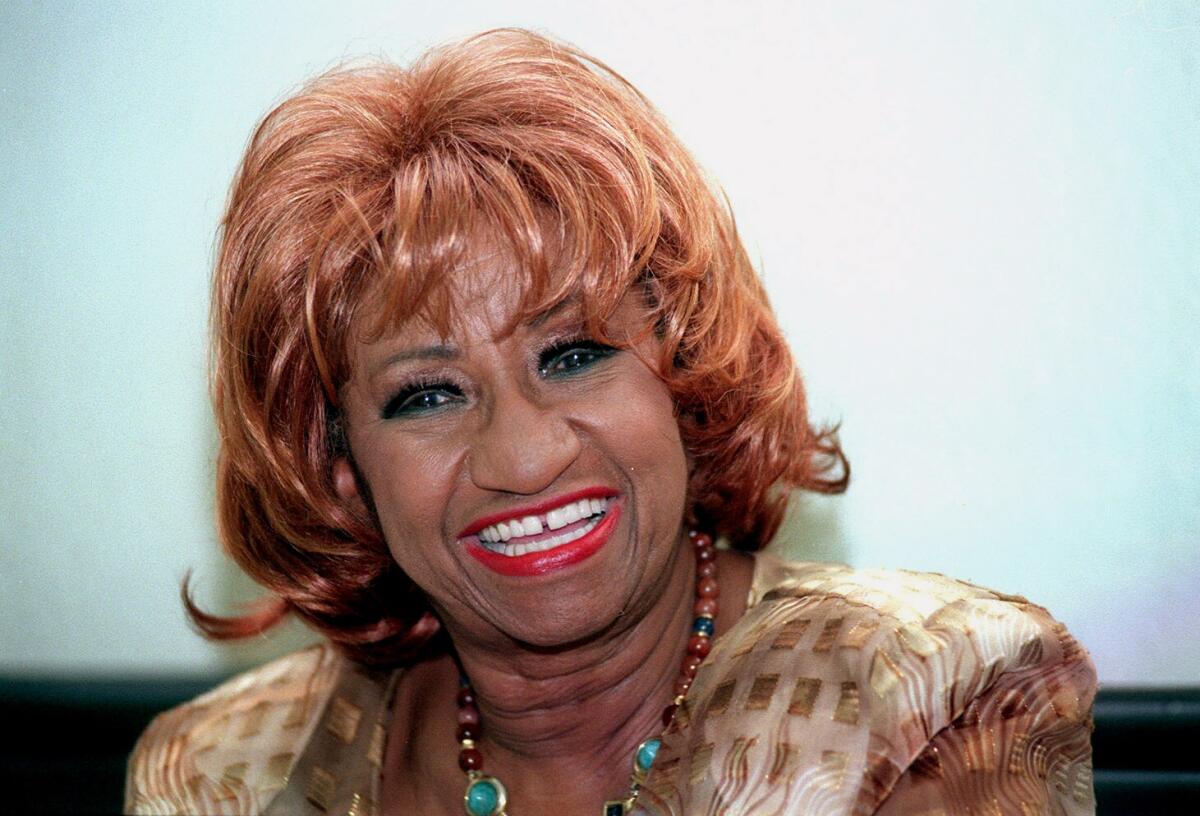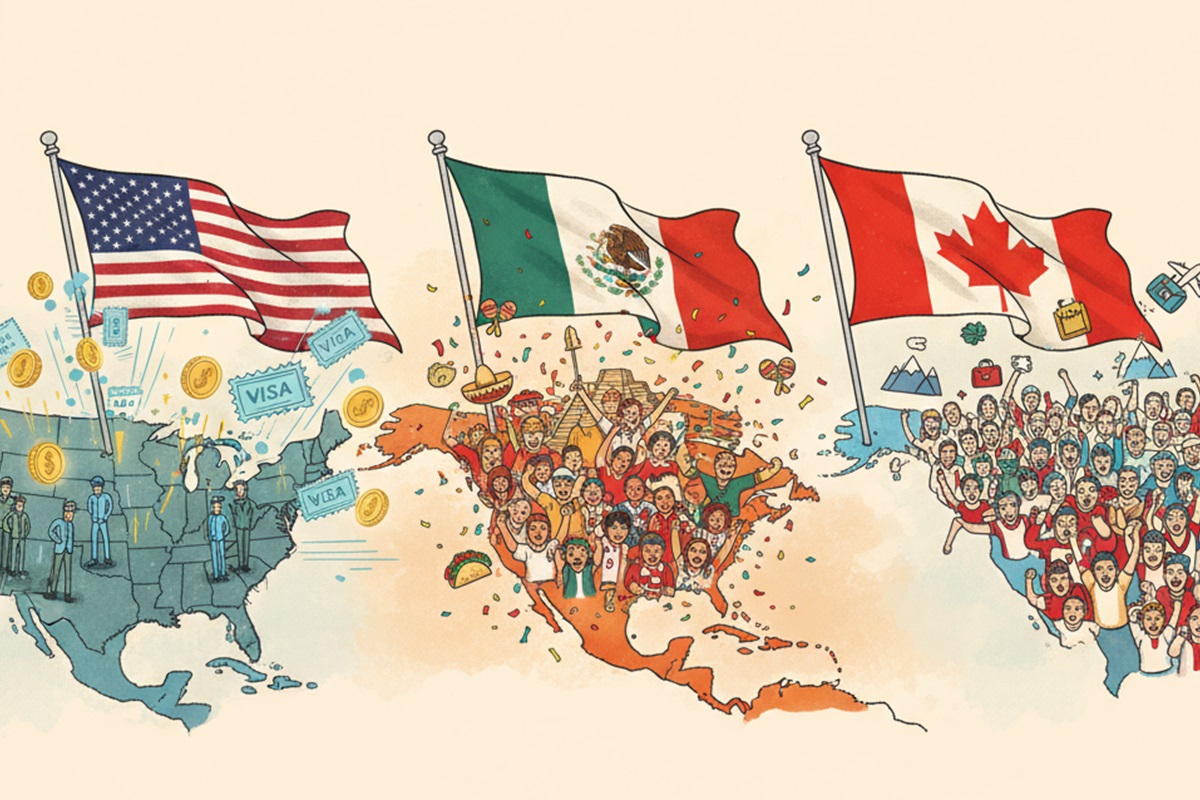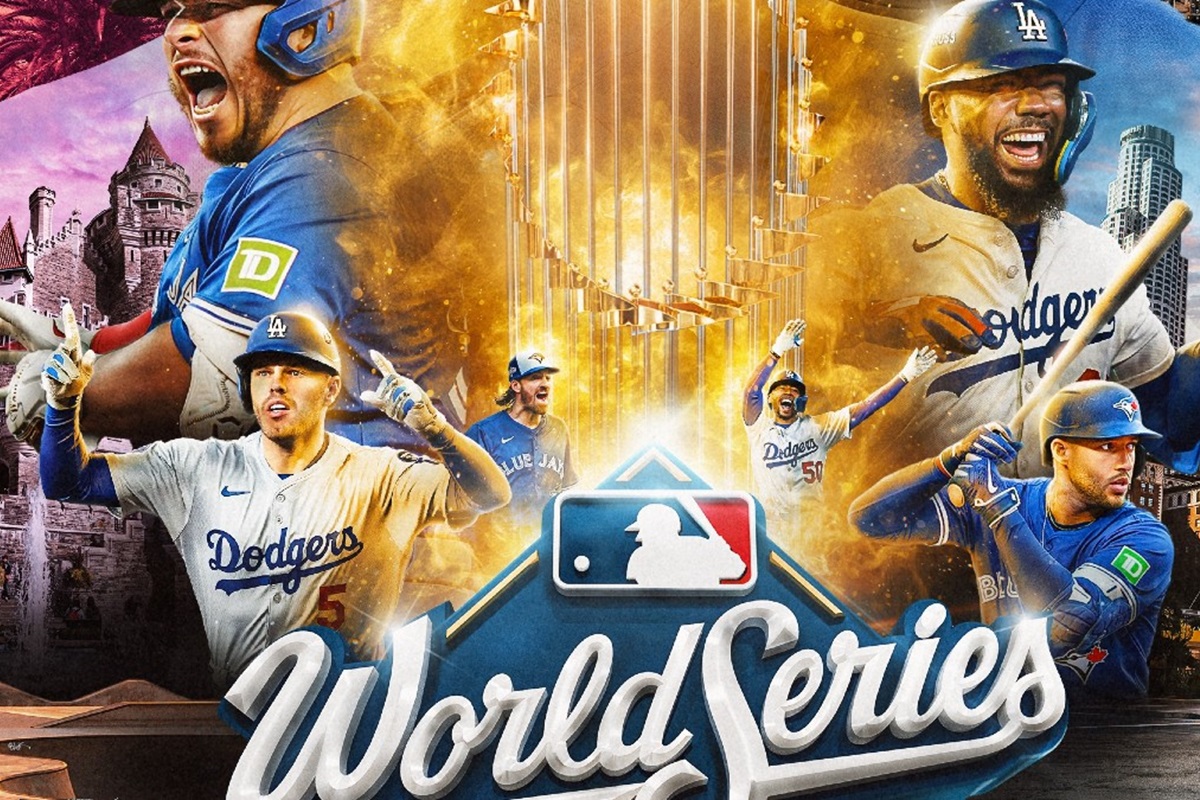During the 51st G7 Leaders’ Summit held in Kananaskis, Alberta, Canada, Mexico’s President Claudia Sheinbaum made a gesture that transcended diplomatic protocol to become a powerful symbol of friendship and hemispheric cooperation: she presented Canadian Prime Minister Mark Carney with a handcrafted football made by Wixárika artisans, members of one of Mexico’s Indigenous communities. This meaningful act was not merely a diplomatic courtesy but a reflection of the spirit that unites Mexico and Canada as co-hosts of the world’s most important sporting event: the 2026 FIFA World Cup.
A Gift That Speaks Beyond Football
The ball, carefully crafted by artisans from the Wixárika community, is a true work of art that goes beyond its athletic function. The Wixárikas, native to the states of Jalisco, Nayarit, Durango, and Zacatecas, are renowned for their craftsmanship, which reflects a deep spiritual worldview and connection to nature. Specifically designed to commemorate the 2026 World Cup, this ball not only celebrates football but also brings Mexican Indigenous identity to the global stage.
Mark Carney received the ball enthusiastically, calling the gesture “fantastic” and emphasizing that the three host nations are “completely aligned” in their passion for the sport. Images of the moment quickly spread across social media, underscoring the public and symbolic significance of the gift.
Mexico and Canada: More Than Trade Partners
In her remarks, Claudia Sheinbaum was clear: the relationship between Mexico and Canada goes beyond trade. Culture, friendship, and human connections also play a central role. “Many Mexicans live here in Canada. We are very grateful for the invitation,” said the President, reinforcing the value of a relationship that has evolved into a closer and more diverse collaboration.
Within this context, the Wixárika ball becomes a metaphor for intercultural dialogue, intertwining Mexico’s ancestral traditions with Canada’s multicultural identity. It stands as a symbol of inclusion, respect, and cooperation.
Related article: How BMO Field and BC Place Are Redefining the 2026 FIFA World Cup Experience
The 2026 World Cup: A Historic Opportunity
The 2026 FIFA World Cup will be the first edition of the tournament jointly hosted by three nations. This milestone will not only usher in a new era for football—with a record 48 teams participating—but also offer an unprecedented opportunity for North America to present itself as a united and capable region, ready to host events of global magnitude.
Mexico, already host in 1970 and 1986, will make history as the first country to host three World Cups. Canada, meanwhile, will make its debut as an organizer, and the United States will return after its experience in 1994. Host cities include iconic stadiums such as the Azteca in Mexico City and BMO Field in Toronto.
In Carney’s words, the joint hosting effort is proof that “the excitement and love for this beautiful game” can transcend borders. This sentiment resonates with Sheinbaum’s vision that regional progress should be shared by all.
One Ball, Three Nations, One Message
The Wixárika ball presented in Canada carries more than intricate designs—it carries a message of intent. It symbolizes the aspiration for a more integrated North America, where culture, sport, and diplomacy come together to tackle global challenges as one.
FIFA has projected that the tournament will bring significant impacts in tourism, economic activity, and international visibility for the three countries. Yet the value of this event goes far beyond numbers. In times of geopolitical tension and environmental challenges, a joint celebration that promotes mutual understanding among peoples is more relevant than ever.

